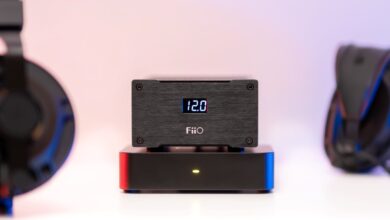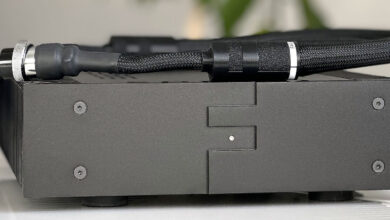xDuoo Link Review – A Sidekick For Your Smartphone
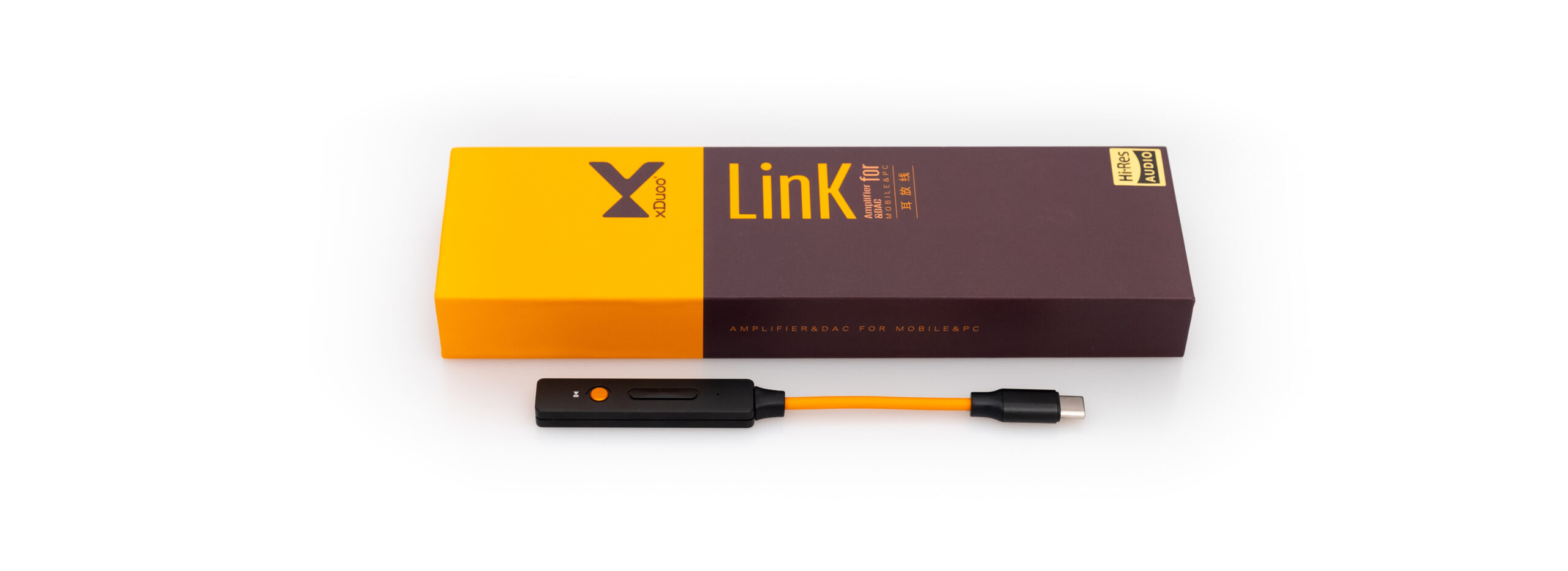
My Video Review:
Disclaimer: xDuoo Link was sent to us as a review unit in exchange for our honest opinion. We thank team Xtenik Audio for this opportunity!
The moment Apple announced they are dropping the headphone jack on their smartphones was the moment I knew that special devices and dongles will be developed soon to offer you that. Since not a lot of flagship smartphones have a headphone jack nowadays, a lot of music lovers moved completely to wireless headphones. I am still testing a couple of wireless headphones every month or so, but I still have a special place in my heart for simple portable wired headphones. As much as wireless technology evolved, it is still not on the same page with a simple cable and that says a lot. Audio manufacturers started developing portable bus or battery powered portable DACs, from small USB dongles like the one I am testing today, to huge and advanced units like iFi Micro iDSD, anyone could choose something for their taste and pockets.
I already covered an advanced portable DAC and headphone amp unit from xDuoo called XD-05 Plus and today I will be testing its smallest brother: the xDuoo Link.

Unboxing
There isn’t a lot to say about the packaging since inside the thick and colorful cardboard box you will find a flyer with all its specs & features and underneath that the unit itself can be spotted. There is a Hi-Res Audio sticker on the box meaning it should decode even some higher rate material like 32 bit PCM, that is interesting.
Looks & Build Quality
Again, there isn’t much to say about it, except that the dongle is made out of a high-quality metal, it feels solid and well made. The orange cable is really stiff and quite thick, it should resist a lot of abuse and the USB Type-C connector seems to be of a higher quality than the usual ones that are coming with your smartphone in the box. On the back there is another Hi-Res Audio sticker, xDuoo seems to be proud about this one and every Link is having its serial number stamped on the back. I don’t remember mentioning it in the XD-05 Plus review, but I quite like the newest xDuoo logo, it looks way better compared to the older one.
The CNC-ed metal body has rounded edges so it should not scratch your smartphone. I don’t see myself attaching it on the back of my phone using an adhesive double tape because it is just a bit thicker than the cable, its lightweight and doesn’t put a lot of stress on the USB-C connection.

Buttons & I/O
It connects only via USB type-C and has a single 3.5mm headphone jack as an output. The metal body has 3 buttons and a small LED indicator that will show its working status. The elongated black button is the volume up and down buttons and the orange circle is your play or pause button. Very simple and straightforward. You don’t need to install extra software for it to work, just plug it in, attach some headphones to it and listen to some music.
Volume Control
The volume buttons on xDuoo Link are an extension of your smartphone volume and of your desktop OS (Windows and MAC OS). This is not an independent volume control and you can either use your phone’s volume buttons or the ones on it. There is one feature that was missed on this one: it would be nice if a longer press on volume up or down worked as a remote changing to next or previous track on your playlist.
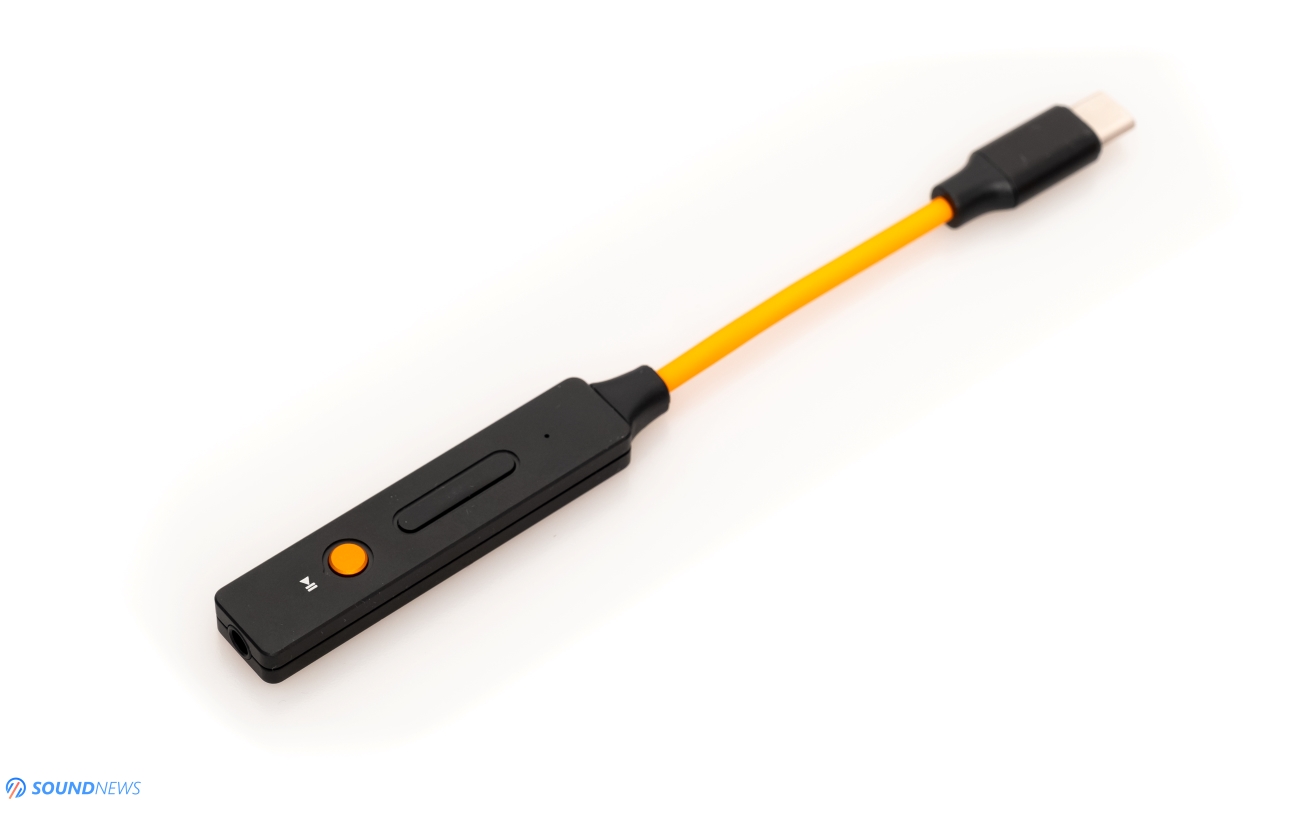
Tech Specs
First of all, xDuoo Link doesn’t have an internal battery and is completely relying on your phone battery. Don’t worry, it doesn’t drain a lot of juice, I didn’t observe a big impact on the battery life even after walking outside for about 2 hours and listening to some music on the go with it.
xDuoo implemented an all-in-one SoC (System-On-Chip) from ESS Technologies, more exactly the ES9118EC. This one has double duties: it is a dedicated DAC and will decode all your digital music into analog sound waves and it has a built-in low voltage headphone amp that will offer 32mW of power into 32 Ohms or 1.1 Vrms if you want it in Volts. That is just a bit more than your average smartphone. The best part is that no additional circuitry was needed, from the digital decoding to analog amplification, everything is done inside this SoC for the shortest possible signal path.
The DAC part is actually pretty good, spec wise it is delivering up to 126 dB SNR and –113dB THD and noise using the ESS patented 32-bit HyperStream DAC architecture and Time Domain Jitter Eliminator. Multiple companies are implementing all-in-one solutions like this one, FiiO has a very similar SoC in its BTR5 and M5 DAP, Shanling has one is their newest Q1 DAP, LG Electronics and Meizu used this one with some of their smartphones and there are many other examples.
This particular SoC can decode up to 32-bit 384 kHz PCM files and DSD up to DSD256, kind of impressive for such a small unit.

Sound Performance
I. Connected to sensitive IEMs
I was wondering if it will hiss with sensitive and multi-driver IEMs and I’m glad to tell you that Link performed admirably and I didn’t spot any noise whatsoever even after pressing play and going way up volume wise.
I had plenty of volume with FiiO FH7 and Simgot EN700 PRO and I actually never reached its maximum volume so a lot of headroom remained even for quitter music and I think pairing it with IEMs is a very good idea. Volume wise I was at about 65% with EN700 Pro and at about 60% with FH7 and I couldn’t go higher than that. As a point of comparison, with a Xiaomi Mi9T Pro I am at 80% volume position with EN700 Pro and at about 75% with FH7 for the same volume and SPL. Link has a bit more power on tap but it depends on the phone, others might have a lower or a higher power output.
I personally don’t like the headphone jack of my phone as it kills dynamics and everything sounds really congested and closed-in and not that detailed.
With Link my music is decompressing a bit, soundstage is still smaller in size but everything seems to be better positioned for me to dissect. Driver control is by a hair better, slam was improved and dynamics kicked it but not a lot of them. The biggest change I felt was in terms of detail retrieval, I just heard a clearer presentation, everything sounded less fuzzy and muddy to me. Depth remained basically the same and it presented a simple and double dimensioned sound. Notes were not hitting an imaginary wall after a microsecond and everything decayed much faster so there is not a lot of time to observe.

II. Connected to portable over-ear and on-ear headphones
Connecting Sennheiser Momentum M2 (over-ear version) and then Momentum 3 in wired mode I needed to raise the volume higher. Both are close in terms of power requirements so I needed about 80 to 85% volume to squeeze better dynamic swings and a faster transient response.
I liked that Link was able to drive those and awake some good dynamics, both Momentums sounded enjoyable and very mid-centric, I headbanged on my usual faster paced music, meaning that Link is doing its mumbo-jumbo on me. On the other hand, I disliked that going lower in volume, dynamics dropped a lot and everything is becoming boring and plain. I also tried some harder to drive portable headphones like Erzetich Thalia but Link was always maxed out volume wise and couldn’t offer me a believable stage, a faster kick and impact or a good bass sustain. Thalia might look portable but are actually asking for a lot of juice out of portable sources so I’m not that surprised really.
Another thing that was very apparent with Momentums: detail retrieval was (much) better compared to my phone, I could hear more of everything. I was hearing more bass layers, it gone deeper too, midrange was sounding clearer and I’ve heard more nuance in those voices, treble offered way more micro-details and it just kept going up and up even to sub-sonic treble areas. My phone renders cymbals and double-drums like an ugly mess so Link already is worth every penny in my mind.
Soundstage and depth information was just by a hair better compared to my phone and few sounds appeared on my shoulder level but never outside my head like more expensive devices are doing.
I didn’t try desktop headphones with it and I don’t see a reason for that, if Erzetich Thalia were no Bueno on it, then desktop headphones are out of the question.

III. Frequency Response
This is the first time I am testing this particular SoC, I can firmly say I’ve tested the vast majority of ESS designs and xDuoo Link reminds me a lot about those with few notable changes.
I will first state the worst part, that I think is not on the same level with the rest and that is its midrange level. Midrange seems to be lowered compared to the rest of the FR, I am expecting some melodic and soul grabbing voices but that is not happening here. String based instruments have a weaker vibration and I can’t feel its sustain. It’s not that clear sounding in this area and it puts all that midrange in the backstage somehow. It lacks midrange presence and can’t offer a natural or musical performance and this is why I consider it sounding V-shaped.
Bass is considerably better but it is not elevated or boosted in any way. Sub-bass will go low but will not impress bass-heads. The culprit of this is actually not the DAC section but the headphone amp section that sadly can’t move a lot of air around, bass detail and depth can be spotted only in serious desktop solutions so it will not rumble or shake your ears but will be present in a normal dose. Mid-bass is better defined, more polished, it’s not that shy sounding and likes attracting attention to it.
The best part of xDuoo Link is the treble region, combine a decent pace, rhythm and timing with a clear and detailed presentation and you can already imagine it having a good treble performance. Link shows plenty of detail and shimmer and will render those cymbals, double-drums and bells pretty nicely.
Overall, it has a quite nice and rounded frequency response, the lowest sub-bass and top-octaves are rolled-off a bit and midrange took a small hit in the presence department.

IV. Using it in the desktop DAC mode
My desktop PC discovered it immediately as xDuoo Audio and it can be selected as a dedicated audio card/DAC. The volume buttons on it are still working and those are changing the windows volume, no driver was necessary to install for it to work.
As expected, it works as a normal external audio source, Foobar2000 and JRiver worked wonderfully with it, even desktop Tidal HiFi app recognized it as a Hi-Resolution capable DAC. It sounds basically the same as with my smartphone. As you might know, all PCs have dirtier USB sockets but surprisingly my IEMs didn’t show a single trace of background noise or hiss with it attached, again just a clean and noise-free musical performance. I don’t know how it is doing it but it has a very clean background and it rejects all the incoming noise from the dirty USB bus.
No lag was detected and, in this regard, it actually worked better than FiiO BTR5 or Shanling Q1 that had just a bit of lag while using them in desktop DAC mode so complains here. It worked fast, reliable and driver-less with my PC, can I ask for more?
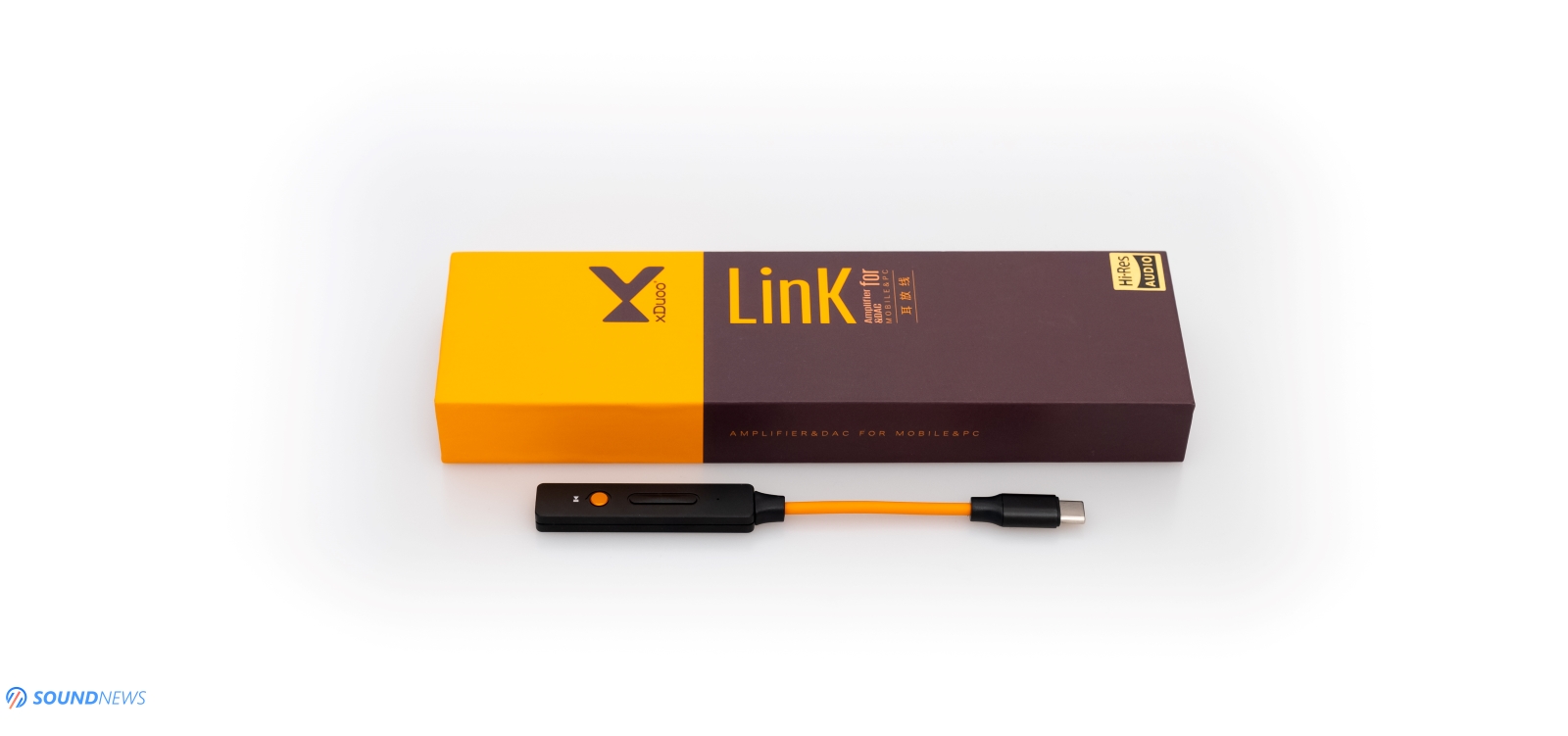
Conclusion
This is my first contact with a dongle that works as an interesting attachment to my smartphone and it actually sounded pretty good considering its size and price. This one is targeted not only for the average consumer but for music lovers as well that don’t want to spend too much or carry around heavy and expensive equipment.
It sounded way more detailed than my phone, a bit wider and more transparent, every aspect was improved in smaller or bigger doses so I’m quite pleased with its overall performance.
Don’t have a headphone jack on your phone but love your wired headphones? Here’s an affordable solution for you. xDuoo Link can be had for just $48 and you can have it from from here with free word-wide shipping.
PROS:
- Thin as a cable and as portable as it can get
- Has a strong aluminum body with a natural smooth shape
- Quite neutral sound signature with a V-shaped frequency response
- Decent soundstage
- Good detail retrieval especially in the treble region
- Quite transparent sounding, free of any grain
- Very clean sounding headphone out, works great even with sensitive IEMs
- Can work as a DAC via USB-C with your phone or computer
- Great value!
CONS:
- Shy frequency extremes
- Limited in power output
ASSOCIATED EQUIPMENT:
- Sources: Xiaomi Mi9T Pro, Corsair One i160
- Bluetooth receivers: FiiO BTR5, BTR3
- DACs: xDuoo Link, Matrix Audio Element X, KECES S3
- DAPs: M11 Pro, FiiO M5, Shanling Q1
- Headphone amps: Benchmark HPA4, Kinki Studio THR-1
- IEMs: FiiO FH7, Simgot EN700 Pro
- True Wireless earphones Creative Outlier Air, Hifiman TWS600
- Wireless headphones: Sennheiser Momentum 3 Wireless
- Portable headphones: Sennheier Momentum 2, Erzetich Thalia
- Full-sized headphones: Erzetich Phobos, Hifiman Arya, Quad ERA-1, Sennheiser HD660S
- Loudspeakers: KEF LS50W
- Interconnects: QED Reference XLR, Aune AL3 XLR
- Power Cables: Isotek EVO3 Premier (x2)
- Balanced Power Conditioners: PLiXiR Elite BAC 400, KECES BP-600


